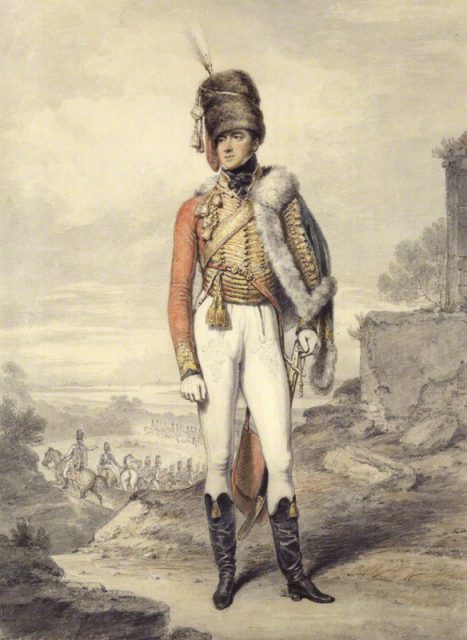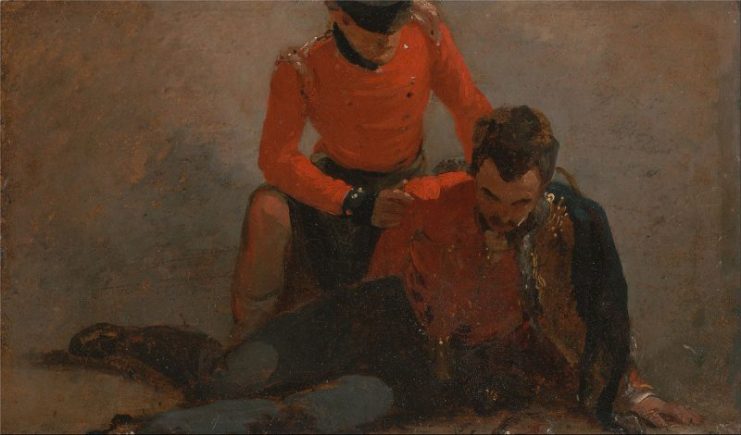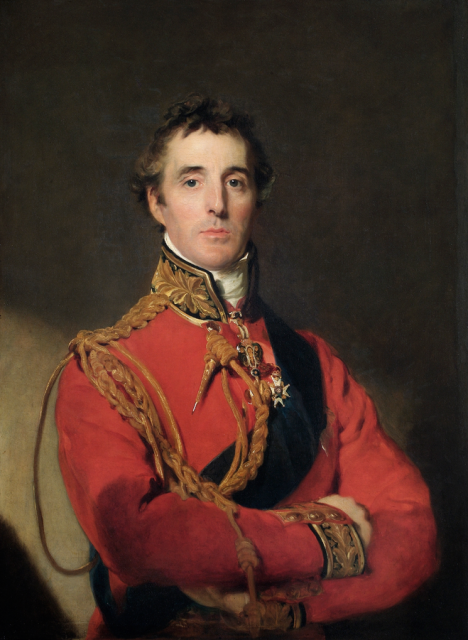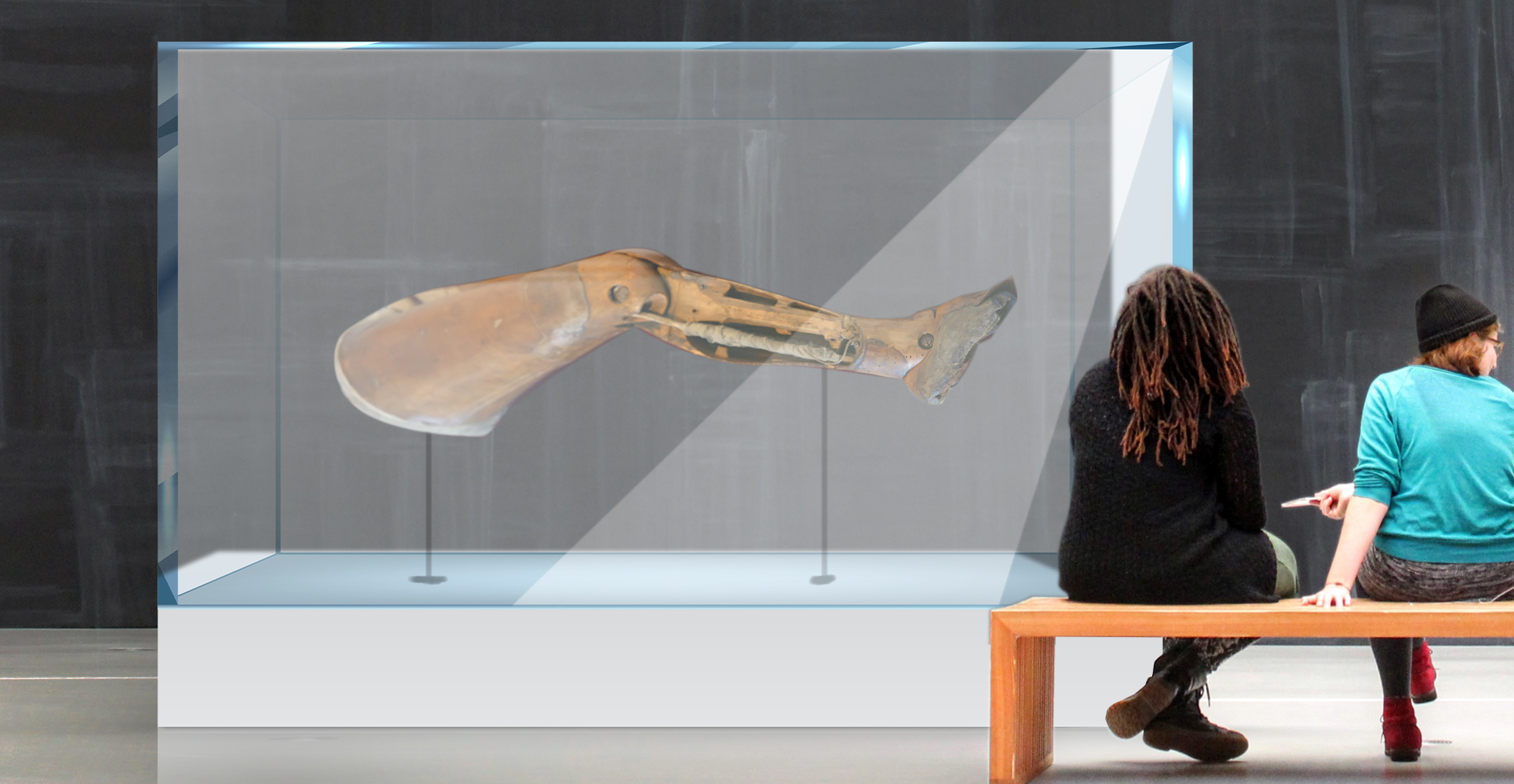Despite the fact that eight horses were shot out from under him during these charges, he kept returning to the battle on fresh mounts.
One thing many British officers of the 19th century were rather famous for was both their stoicism and dry humor, even in the face of danger. One man who espoused this attitude was Henry Paget, the Earl of Uxbridge and Commander of the British Cavalry at the Battle of Waterloo on June 18, 1815.
During the battle, Uxbridge’s right leg was badly wounded by a French cannonball and had to be amputated – which was done without anesthetic. In a strange twist of events, the amputated leg became a celebrity in its own right.
Uxbridge fought in the Battle of Waterloo with tremendous courage and martial skill. As a lieutenant general in charge of 13,000 cavalrymen and 44 horse-drawn guns, he led his troops from the front.

He and his men played a crucial role in the battle when he led a successful charge of 2,000 heavy cavalry against D’Erlon’s French infantry.
He participated in another eight or nine cavalry charges throughout the remainder of the battle, leading light cavalry instead. Despite the fact that eight horses were shot out from under him during these charges, he kept returning to the battle on fresh mounts.
Miraculously, Uxbridge emerged at the end of the day pretty much unscathed – until the French decided to fire a last few artillery rounds at the British.
It was then, while Uxbridge was riding alongside the Duke of Wellington, that his luck ran out. One of the final French cannonballs hit Uxbridge on his right knee, shattering the bones in his leg.

Uxbridge is reported to have remarked to the Duke of Wellington, “By God, sir, I’ve lost my leg!”, to which Wellington supposedly replied, “By God, sir, so you have!”
A surgeon who examined the leg quickly determined that there was no way it could be saved and that amputation was the only option. The surgery took place at Uxbridge’s temporary headquarters: the house of a Frenchman, Monsieur Hyacinthe Joseph-Marie Paris, near Waterloo in Belgium.
The operation was to be done, as most battlefield amputations of the time were, without anesthetic.
Uxbridge’s composure never once faltered during the entire procedure. Despite the fact that he must have been experiencing excruciating agony as the surgeon sawed off his leg, Uxbridge remained cool and calm throughout the operation.

In classic British fashion, he simply remarked that the “knives appear somewhat blunt” as his leg was being hacked off. When the limb had finally been amputated, he is alleged to have smiled and said, “Who would not lose a leg for such a victory?”
What happened next, though, was something that nobody would have expected. Uxbridge’s amputated leg was not disposed of, but rather was kept by Monsieur Paris, who owned the house in which the amputation was performed. Monsieur Paris buried the amputated leg in his garden and had a tombstone made for it.
Quite bizarrely, the leg’s grave became a tourist attraction which soon began attracting dignitaries from all over Europe, including royalty like the Prince of Orange and the King of Prussia. Because Monsieur Paris charged people for entry, the business of admitting visitors to this strange shrine to Uxbridge’s leg soon became quite lucrative.

In 1878, the remains of the leg caused a bit of a diplomatic spat between France and England. Lord Uxbridge’s son visited the house of Monsieur Paris in 1878 and was shocked to find the shattered bones of his father’s leg openly displayed. Apparently, they had been exposed after a severe storm.
After the British government complained, the Belgian ambassador asked the Paris family to return the bones to Uxbridge’s family. The Paris family responded by saying that they would only do so if the Uxbridge family paid for the bones, at a rather hefty price.
To avoid an international incident, the Belgian Minister of Justice ordered the Paris family to rebury the bones, at least. While the family grudgingly removed the bones from display, they didn’t actually bury them.

After Monsieur Paris’s heir passed away in 1935, his widow found the bones hidden away in his study. Horrified, she incinerated them in the house’s furnace.
Thus ended the strange story of Lord Uxbridge’s leg. As for the man to whom the leg had once belonged, Uxbridge is reported to have used the phrase “one foot in the grave” fairly often throughout the rest of his life when asked about his health.
The loss of his leg didn’t slow him down in the slightest. He received one of the first ever articulated prosthetic limbs, which was made from wood, leather, and springs, and which was attached to his stirrup to allow him to continue to ride horses.
Lord Uxbridge went on to become a Knight of the Garter as well as a Field Marshal in the British Army. He was offered £1,200 a year as compensation for the loss of his leg, but in characteristic fashion, cheerfully refused this offer.
He lived a long and eventful life until the ripe old age of 85.
